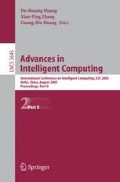Abstract
We propose a new sub-term relation to specify syntax of messages with MAC (Message Authentication Code) payload for the cryptographic protocols in the strand space model. The sub-term relation was introduced to formal analysis of cryptographic protocols based on theorem proving, but some defects have been found in it. In the present paper, first, the operatorf is defined to the extend sub-term relation, which is used to amend its original flaws. Second, a new ideal is constructed, and is used to expand the bounds on the penetrator’s abilities. Third, the decidable theorem for honesty of ideals holds as it is described under the extended sub-term relation is proved. Fourth, we propose the theorem of the satisfiability for decidable conditions of honest ideals and annotate how invariant-sets generate, which is used to verify security properties of cryptographic protocols.
Access this chapter
Tax calculation will be finalised at checkout
Purchases are for personal use only
Preview
Unable to display preview. Download preview PDF.
References
Burrows, M., Abadi, M., Needham, R.: A Logic of Authentication. Proceedings of the Royal Society, Series A 426(1871), 233–271 (1989), Also appeared as SRC Research Report 39 and, in a shortened form. ACM Transactions on Computer Systems 8(1), 18–36 (1990)
Kindred, D.: Theory Generation for Security Protocols [Ph.D. Thesis]. Pittsburgh: Department of Computer Science, Carnegie Mellon University (1999)
Lowe, G.: Breaking and Fixing the Needham-Schroeder Public-key Protocol Using FDR. In: Margaria, T., Steffen, B. (eds.) TACAS 1996. LNCS, vol. 1055, pp. 147–166. Springer, Heidelberg (1996)
Millen, J.: The Interrogator Model. In: Proceedings of the 1995 IEEE Symposium on Security and Privacy, pp. 251–260. IEEE Computer Society Press, Los Alamitos (1995)
Meadows, C.: The NRL Protocol Analyzer: An Overview. Journal of Logic Programming 26(2), 113–131 (1996)
Paulson, L.C.: Proving Properties of Security Protocols by Induction. In: 10th IEEE Computer Security Foundations Workshop, pp. 70–83. IEEE Computer Society Press, Los Alamitos (1997)
Javier Thayer Fábrega, F., Herzog, J.C., Guttman, J.D.: Strand Spaces: Proving Security Protocols Correct. Journal of Computer Security 7(2-3), 191–230 (1999)
Abadi, M., Gordon, A.D.: A Calculus for Cryptographic Protocols: The Spi Calculus. Information and Computation 148, 1–70 (1999)
Gordon, A., Jeffrey, A.: Authenticity by Typing in Security Protocols. In: 14th IEEE Computer Security Foundations Workshop, pp. 145–159. IEEE Computer Society Press, Los Alamitos (2001)
Gordon, A., Jeffrey, A.: Typing Correspondence Assertions for Communication Protocols. In: Mathematical Foundations of Programming Semantics 17. Electronic Notes in Theoretical Computer Science, vol. 45. Elsevier, Amsterdam (2001)
Abadi, M.: Secrecy by Typing in Security Protocols. Journal of the ACM 46(5), 749–786 (1999)
Abadi, M., Blanchet, B.: Secrecy Types for Asymmetric Communication. In: Honsell, F., Miculan, M. (eds.) FOSSACS 2001. LNCS, vol. 2030, pp. 25–41. Springer, Heidelberg (2001)
Huai, J., Li, X.: Algebraic Model and Security of Cryptographic Protocols. Science in China (Ser. E) 33(12), 1087–1106 (2003)
Harkins, D., Carrel, D.: The Internet Key Exchange (IKE), RFC2409 (1998), Available at http://www.faqs.org/rfcs/rfcs2409.html
Author information
Authors and Affiliations
Editor information
Editors and Affiliations
Rights and permissions
Copyright information
© 2005 Springer-Verlag Berlin Heidelberg
About this paper
Cite this paper
Wang, H., Zhang, Y., Li, Y. (2005). Modeling for Security Verification of a Cryptographic Protocol with MAC Payload. In: Huang, DS., Zhang, XP., Huang, GB. (eds) Advances in Intelligent Computing. ICIC 2005. Lecture Notes in Computer Science, vol 3645. Springer, Berlin, Heidelberg. https://doi.org/10.1007/11538356_56
Download citation
DOI: https://doi.org/10.1007/11538356_56
Publisher Name: Springer, Berlin, Heidelberg
Print ISBN: 978-3-540-28227-3
Online ISBN: 978-3-540-31907-8
eBook Packages: Computer ScienceComputer Science (R0)

